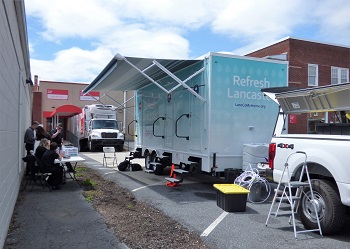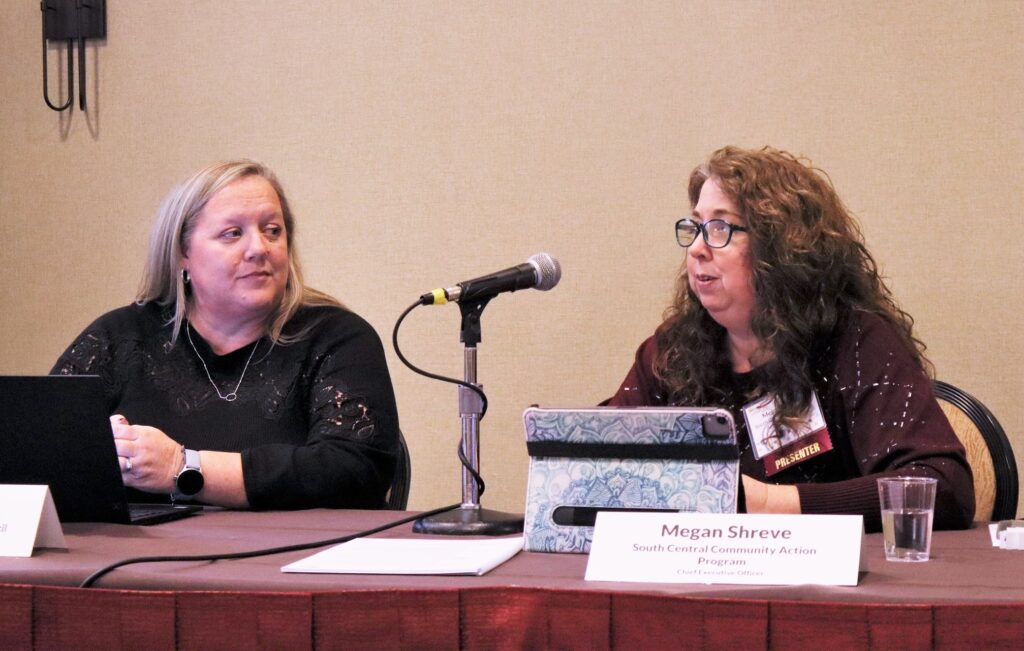(Editor’s note: This article is part of One United Lancaster’s coverage of the Housing Alliance of Pa.’s 2022 Homes Within Reach conference.)
Building relationships between social service organizations and health systems can yield tremendous benefits, but it’s not without its challenges, nonprofit leaders said during a workshop on the issue at the Homes Within Reach conference.
“We don’t always see eye to eye … but we get through it,” said Erin Lukoss, CEO of Bucks County Opportunity Council.
Lukoss joined Jen Koppel, manager of Vulnerable Populations Programs at Penn Medicine Lancaster General Health and former director of the Lancaster County Homelessness Coalition, and Megan Shreve, CEO of South Central Community Action Program, for a panel discussion on the opportunities of partnering with health systems and the pitfalls to avoid. The session was moderated by Deb Jones, Koppel’s successor as the leader of the Homelessness Coalition, which is now under the umbrella of the Lancaster County Redevelopment Authority.
Research suggests that no more than 20% of a community’s net health outcomes are due to direct medical care. The other 80% or more stem from factors collectively known as the social determinants of health: Diet, exercise, the quantity and quality of social relationships, environmental safety and so on.
That’s where partnerships between nonprofits and health systems can have an impact, the women said.

As leader of the Homelessness Coalition, Koppel spearheaded Refresh Lancaster, the mobile shower trailer operated by the coalition in partnership with Lancaster EMS. The many supporting partners include LG Health and United Way of Lancaster County.
Refresh Lancaster was eight years in the making, Koppel said. It’s something the homeless population wanted, and functions as an entry point for outreach workers to build trust, offer basic medical care and encourage clients to engage with services that over time can help them secure permanent housing and more stable lives.
In her current role, Koppel is looking at ways to support at-risk patients to reduce emergency room visits and improve health outcomes. That may necessitate more outpatient services, but it should be more than offset by reduced demand on the ER, she said.
As for Bucks County Opportunity Council, it and other nonprofits launched Fresh Connect, a mobile fresh produce market, with support from Trinity Health.

It serves roughly 800 households, distributing 4,000 to 6,000 pounds of food every week, Lukoss said.
Participants report not only losing weight, but meeting neighbors and building a sense of community around the food truck’s neighborhood visits.
Bucks County Opportunity Council also partners with Magellan, a managed care organization, Bucks County Behavioral Health on STEP, Stability Through Engaging Partners, a support program for at-risk individuals being discharged from hospital care.
South Central CAP runs The Gleaning Project, which uses surplus produce to supply community farm stands, in partnership with support from managed care organizations in Adams and Franklin counties. Highmark WholeCare underwrites the nonprofit’s Support Circles family self-sufficiency program.
Nonprofits and health systems speak different languages, the three said, and approach problems in different ways. Nonprofits tend to take a more holistic approach than health systems, which are focused on their core competency: Diagnosing and treating medical conditions.
Data systems and are vastly different in the two sectors, as are funding sources and payment arrangements, creating significant complication and opportunities for confusion.
Nonprofits should lead with their strengths, Lukoss and Shreve said. They should be willing to compromise, but also to say no outright when a proposal isn’t a good fit.
“You need to think about what works for you, what you do well … and then negotiate those pieces,” Shreve said.






